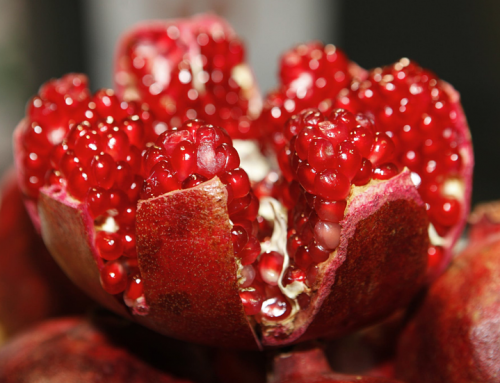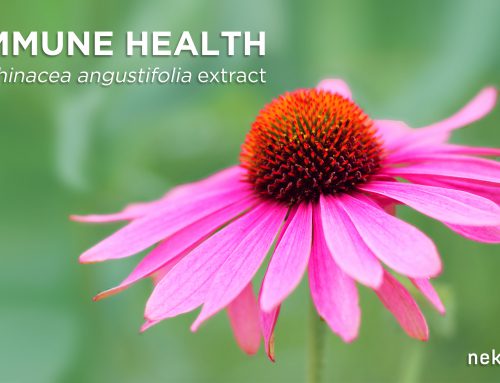Nearly 9 out of 10 Americans Give Their Immune Systems a Failing Grade.
New Clinical Study Shows Immune System Fortification Properties of Antioxidant Supplement Setria® Glutathione – Offering New Way for Consumers to Boost Immune System Strength.
NEW YORK – According to a recent consumer survey by KYOWA HAKKO USA., INC., only 16 percent of consumers would give their immune systems an “A” grade, leaving 84 percent of consumers looking for ways to support their less-than-perfect body defenses.1 Luckily, a new long-term, randomized, double-blind, placebo-controlled human clinical trial showed, for the first time, that an oral supplement of Setria® glutathione can strengthen the body’s immune system.2
The results of a recent study, led by Dr. John P. Richie of Penn State University, and published in the European Journal of Nutrition showed that supplementation of glutathione doubled natural killer (NK) cell activity.2 NK cells are vital to immune health as they play a major role in the body’s rejection of damaged or infected cells. Additionally, NK cells play an important role in protecting the body from viral infections.
The consumer survey by KYOWA HAKKO USA, INC. (Kyowa Hakko) also discovered that a similar number (83 percent) of consumers believe there are things they can do proactively to help boost their immune health.1 The results of Dr. Richie’s research validate those 83 percent, and further prove that glutathione – already considered one of the most powerful protective substances in the human body – is a proven fortification option for those consumers looking for ways to strengthen their immune systems.2
Dr. Richie, who has studied glutathione for more than 30 years, said, “Seeing the two-fold increase in NK cell activity from glutathione supplementation indicates that glutathione could be playing an important role in boosting the body’s immune system.”
About the Study:
- Trial measured effect of glutathione supplementation at 250 mg/day and 1000 mg/day on glutathione levels in different blood components and exfoliated buccal mucosal cells over a six month period.2
- Subjects were 54 healthy adults (41 females/13 males), 28-72 years of age (mean=46.6 years).2
- Results of the study showed glutathione levels in the blood increased after one, three and six months vs. baseline at both doses.2
- At six months, mean glutathione levels increased 30-35 percent in erythrocytes, plasma, and lymphocytes, and 260 percent in buccal cells in the high dose group (P<0.05).2
- Glutathione levels increased 17 and 29 percent in blood and erythrocytes, respectively, in the low dose group (P<0.05).2
- Natural killer cytotoxicity increased two fold in the high-dose group versus placebo at 3 months. 2
- A reduction in oxidative stress in both glutathione dose groups was indicated by decreases in the oxidized to reduced glutathione ratio in whole blood after 6 months.2
- According to the study, the effects of glutathione supplementation on the levels of the glutathione precursor cysteine in plasma and the activity of the rate-limiting glutathione biosynthetic enzyme GCL in erythrocytes were examined after the six-month study period.2 No changes were observed in cyst(e)ine concentrations or GCL activity in any of the groups.2
In addition to its immune benefits, glutathione is known to work in the body to eliminate toxic chemicals, maintain cell proteins, act as an antioxidant, and maintain proper levels of vitamins C and E. While it is considered the body’s “master antioxidant,” factors such as age, medication intake, health conditions, lifestyle, diet, weight and even time of day, can all outpace the body’s natural production of glutathione.
About the Research:
Kyowa Hakko’s consumer survey was conducted by Wakefield Research (www.wakefieldresearch.com) among 1,000 nationally representative U.S. adults ages 18+, using an email invitation and an online survey. Quotas have been set to ensure reliable and accurate representation of the U.S. adult population 18+. Results of any sample are subject to sampling variation. The magnitude of the variation is measurable and is affected by the number of interviews and the level of the percentages expressing the results. For the interviews conducted in this particular study, the chances are 95 in 100 that a survey result does not vary, plus or minus, by more than 3.1 percentage points from the result that would be obtained if interviews had been conducted with all persons in the universe represented by the sample.1
This study was supported by KYOWA HAKKO USA., INC. and KYOWA HAKKO BIO CO., LTD. Setria® Glutathione can be found in select supplement manufacturers. For more information visit www.setriaglutathione.com.
About Setria® Glutathione:
Setria® Glutathione, manufactured by KYOWA HAKKO BIO CO., LTD. is a clinically studied form of glutathione that, when taken orally, has been shown to replenish the body’s reserves, which may be depleted as a result of poor lifestyle choices, stress or natural aging. Called the “master antioxidant,” glutathione helps protect cells in the body from the damaging effects of oxidative stress and toxins. Setria Glutathione is manufactured through a patented fermentation and patent pending for increasing natural killer (NK) cell activity, is pure, vegetarian and allergen-free. For more information about Setria Glutathione, visit www.setriaglutathione.com.
About KYOWA HAKKO USA., INC.:
KYOWA HAKKO USA., INC. is the North American sales office for KYOWA HAKKO BIO CO., LTD., an international health ingredients manufacturer and world leader in the development, manufacturing and marketing of pharmaceuticals, nutraceuticals and food products. Kyowa is the maker of branded ingredients including Cognizin® Citicoline, Pantesin® Pantethine, Setria® Glutathione, as well as Sustamine® L-Alanyl-L-Glutamine. For more information, visit www.kyowa-usa.com.
References
1 Kyowa Hakko, Wakefield Survey, May 2014
2 Richie JP Jr, Nichenametla S, Neidig W, Calcagnotto A, Haley JS, Schell TD, Muscat JE. Randomized controlled trial of oral glutathione supplementation on body stores of glutathione. European Journal of Nutrition. 2014 May 5.




